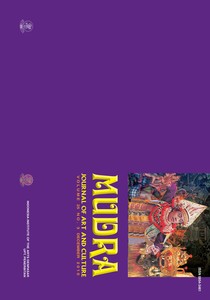I Wayan, Setem
(2010)
Intercultural Balinese Painting from the Classic to the Modern.
Mudra Jurnal Seni Budaya, 25 (3).
pp. 246-257.
ISSN 0854-3461
Abstract
This article examines the representation mode painting like a change parallel to the profound transformation
of the technical or theoretical knowledge, and also parallel to changes in the Balinese society values due to
the physical evolution and the evolution of the system of values. In fact, within one century of painting it
has been like moving from the classical, traditional, standard, homogeneous, local, and collectively turned
into a painting that has been varied, heterogeneous, individual, and internationally with a modern twist.
These waves of change occurred in the span of time through several stages, and most striking result from
cash capitalistic economy and culture, especially tourism. In pre-colonial time the painting is a narrative
religious functions until the time of breath commercialism modernist touches to always make innovations or
changes. From the sacred space of temples and palaces to moving objects souvenirs, hotel interiors, fashion
and even interior and exterior car.
Developments of painting through innovation should not be interpreted
as a discontinuity (rapture) or discontinuity of the local context, but on the contrary,
to appreciate
again
the classical values (pastiche), not by road of preserving it rigidly,
but the process of reinterpretation
and
re-contextualization.
Keywords: Intercultural, reinterpretation and recontextualisation
Actions (login required)
 |
View Item |
![[img]](http://repo.isi-dps.ac.id/2896/1.hassmallThumbnailVersion/MUDRA%2520SETEM%252025%25233.jpg)



